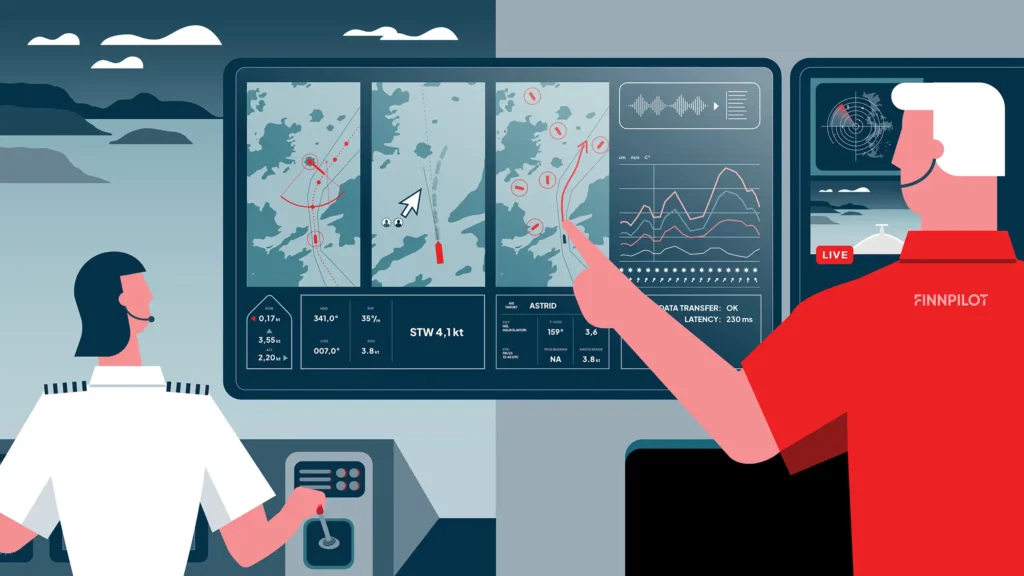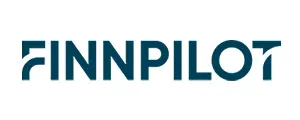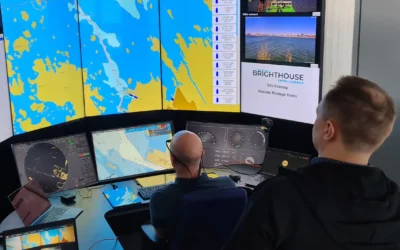Remote pilotage is a modern area of maritime development where pilotage takes place remotely without the pilot being physically on board the vessel. This means that both the remote pilot and the ship’s master have successfully completed remote pilotage training, and both the vessel and the fairway meet the technical requirements set for them.

Finnpilot Pilotage Oy plays a significant role in the development and implementation of remote pilotage in Finland. Finnpilot brings maritime and pilotage expertise to projects and provides insights into how remote pilotage can be safely implemented in the future.
Finnpilot has been actively involved in several international projects that address the technical and operational aspects of remote pilotage. The first technology trial as part of the development of remote pilotage was conducted in May 2022. Although the journey to actual remote pilotage is still long, the results of the development work can already be utilized, for example, in improving the availability of condition information.
International cooperation is also important to ensure that the technologies and operating models of remote pilotage are consistent between different countries. This requires the creation of common standards and international cooperation. For example, an international network has been initiated under the leadership of Finland, which develops remote pilotage in cooperation. The network includes more than 15 countries and started its activities as a Nordic cooperation in 2020 and has since expanded rapidly.
In the development of remote pilotage, it is important that pilots themselves are involved in the development work to define the necessary technology foundations and ensure international cooperation to harmonize technical requirements.
Remote pilotage faces several significant challenges related to both technical and operational aspects. One of the biggest challenges is to create an international definition of what remote pilotage is. Without defining the activity, its regulation cannot be advanced. Standardization guides the development of technology in a direction where the supply of remote pilotage technology comes from multiple suppliers, enabling a wider range and competition in the market. Additionally, the development of technology brings challenges in ensuring compatibility between solutions from different equipment manufacturers. This requires industrial standards to create compatible and globally functioning solutions.
Another significant challenge is international standardization. The language and terminology used in remote pilotage must be consistent to avoid ambiguities or misunderstandings in communication. This requires the creation of common standards and international cooperation. Finnpilot also participates in international standardization, which is important to ensure that solutions from different equipment manufacturers are compatible and that the technologies and operating models of remote pilotage work seamlessly together. This requires the creation of common standards and international cooperation.
On the operational side, one challenge is to ensure that remote pilotage can be carried out safely and efficiently in various conditions and environments. This requires comprehensive testing and simulation to develop and refine operating models and ensure that they work in practice.
The technology of remote pilotage must enable a safe and efficient pilotage event. Here are some key technologies and their roles in remote pilotage:
- Data transfer and communication: Reliable and fast data transfer is critical in remote pilotage. This includes the real-time transmission of ship movement data, condition data, and channel safety device data to the remote pilot. The challenge of data transfer is to ensure that all necessary information is transmitted without delay and interference.
- Standardization: International standardization is important to ensure that solutions from different equipment manufacturers are compatible. This applies to interfaces, data content, interference management, and channel and condition data. Standardization helps ensure that remote pilotage technologies work seamlessly together.
- Redundancy: Ensuring the redundancy of different functions is important to guarantee the reliability and safety of systems. This means that systems have backup systems that can take over tasks if the primary system fails.
- Verbal communication and training: The success of remote pilotage requires clear verbal communication and a shared situational picture. Pilots and ship masters must be well-trained and understand each other’s roles and responsibilities.
- Simulation and testing: Extensive simulation and testing are used in the development of remote pilotage to ensure the functionality and safety of technologies in various conditions. This helps identify potential problems and develop solutions before the technologies are implemented.
Remote pilotage technologies are constantly evolving, aiming to improve maritime safety and efficiency. Standardization also helps ensure that remote pilotage technologies and operating models are safe and efficient in various conditions and environments. This requires comprehensive testing and simulation to develop and refine operating models and ensure that they work in practice.

